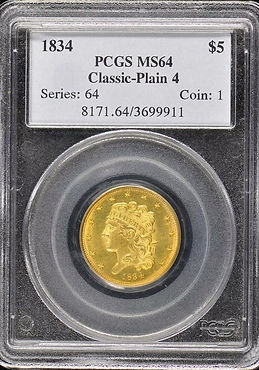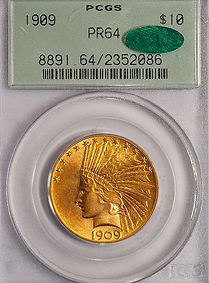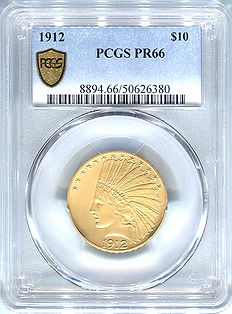
U.S. RARE GOLD COINS

History, Legacy, Value,and Investment Potential
The value of Pre-1933 United States rare gold coins extends well beyond their gold content, encompassing captivating stories, distinctive artistic designs, and a rich, enduring historical legacy.
Collectors and investors cherish these gold coins for their rarity, historical importance, and the tangible link they provide to America's heritage. Let’s dive into the history, legacy, design details, value, and investment potential of these remarkable coins.
Although the U.S. Mint in Philadelphia began minting gold coins for circulation to facilitate trade and commerce in 1795, the narrative of U.S. rare gold coins began with the first major discoveries of gold in Charlotte, NC, and Dahlonega, GA, during the late 1820s and early 1830s.
Gold coins from this era in American history were crafted with exceptional artistry, serving not just as currency but as symbols of the nation's growth and prosperity.
U.S. gold coins came to symbolize American resilience and ambition, embodying national wealth and economic power on a global scale.
Coins from the renowned Carson City Mint, known for its limited mintages, low survival rates, and quality craftsmanship, enhance the exclusivity of certain issues.
Collectors value these coins for their intrinsic value, rarity, artistry, and their connection to America's pioneering spirit. Their production spanned various historical phases, reflecting the artistic and economic landscape of each period.
The value of rare U.S. gold coins is largely determined by their rarity, condition, and historical significance.
Coins with limited mintages, low survival rates, and those in exceptionally well-preserved condition are highly coveted by collectors and investors worldwide.
Some coins possess unique historical stories, which significantly increase their value, particularly those from mints like Carson City or Dahlonega.
The artistry of U.S. rare gold coins is remarkable, showcasing iconic images such as Lady Liberty and heraldic eagles that represent American strength and prosperity.
Renowned engravers like James B. Longacre and Augustus Saint-Gaudens have created small masterpieces, with coins like the Saint-Gaudens Double Eagle celebrated for their exquisite designs that capture America's essence. This artistry elevates these coins from mere currency to valuable financial assets.
U.S. rare gold coins attract collectors and investors due to their historical richness, rarity, and aesthetic beauty.
Many collectors and investors often focus on specific eras, mints, or designs, like the Liberty Head or Indian Head series of coins.
A coin's condition significantly impacts its desirability and value. For collectors and investors, owning a piece of U.S. history that’s both stunning and rare is immensely rewarding. The allure of these coins continues to grow.
In addition to their beauty and historical significance, U.S. rare gold coins present substantial investment potential. Their value typically appreciates over time, fueled by limited supply and strong demand from collectors and investors.
Unlike modern bullion coins, in addition to their intrinsic value, rare United States gold coins carry historical importance and collectibility.
At Minuteman Rare Coin, we excel at curating remarkable, historically significant, eye-opening, and valuable rare United States gold coin collections.
We meticulously examine and carefully select only the finest, authenticated, graded, and certified coins of top investment quality.
With our expertise, you will be empowered to make informed decisions, choose the right coins, and avoid the pitfalls collectors and investors encounter.
You will learn how to master the art of collecting and investing in United States rare gold coins and build a coin collection you'll cherish for a lifetime, spreading joy for generations to come!

If you're just starting out in rare coin collecting and investing, we encourage you to partner with us in curating the most historically significant, valuable, and rewarding rare United States gold coin collection tailored to your interests and budget.
Together, let's forge a lasting relationship as you embark on your numismatic rare coin journey!
THE ALLURE OF GOLD
Gold may not provide any essentials for human survival, yet it has been cherished for its value since ancient times, so much so that untold millions of individuals seeking their fortunes have sacrificed their lives to find this precious yellow metal.
Its allure remains as strong today as it was in the mid-1800s when the quest for this precious yellow metal sparked mass migration westward, fueled the California Gold Rush, and created enormous national economic growth and wealth.
Regarded as the noblest of metals, gold embodies the essence of dreams. Rare U.S. gold coins reflect America's remarkable journey, heritage, and rich history, presenting exceptional investment opportunities for growth in value and price appreciation over time.


EARLY U.S. GOLD COINS 1795-1834
The U.S. Mint faced a significant challenge from the beginning.
When the U.S. Mint began minting gold coins for circulation in 1795, there was no known source of native gold in the entire country.
As a result, the Mint depended on melted foreign gold coins from international trade, mainly the Spanish dollar, along with bullion deposits to create officially sanctioned U.S. gold coins.
Additionally, the U.S. Mint struggled to maintain gold coins in circulation because of melting, hoarding, and exporting.

This situation persisted for nearly 40 years, during which the U.S. economy unofficially operated on a silver standard, as silver was more abundant and less costly than gold.
In the early 1800s, amid Napoleon's European conquests, the value of gold in Europe surpassed the face value of U.S. gold coins, creating an imbalance between U.S. and European currencies.
This allowed bullion brokers and speculators to buy U.S. gold coins, ship them abroad, and sell them for cheaper silver. They would then return to the U.S. to purchase more gold coins, repeating the cycle.
This practice nearly depleted the U.S. gold reserves, leading to significant hoarding and melting of gold coins.
In 1803, President Thomas Jefferson responded to the exploitation of U.S. gold coins by halting the production of the $10 gold eagle indefinitely, a decision that would last more than 30 years.
The mintage of the $5 gold half eagle and the $2.50 gold quarter eagle was also restricted due to similar abuses.
Consequently, an entire generation went without a circulating $10 gold eagle coin.
United States "Early Gold" (1795-1833) coins are considered scarce to rare and are highly sought after by investors and collectors worldwide.
Typically, only collectors and investors with deep pockets venture into the U.S. "Early Gold" rare coin market.
CLASSIC HEAD GOLD COINS 1834-1839
In the late 1820s and early 1830s, significant gold discoveries were made in Charlotte, North Carolina, and Dahlonega, Georgia, marking a pivotal moment for the United States and gold coinage.
By 1834, the melting of U.S. gold coins in Europe had dramatically increased due to the differences in gold-to-weight ratios between U.S. and European currencies. This prompted the export and melting of American coins for profit because of their higher gold content.
The Secretary of the Treasury estimated that less than $1 million in federal gold was in circulation, which was less than the total value of the $5 Half-Eagle coins minted in 1834 alone.
President Andrew Jackson urged Congress to pass the Coinage Act of 1834, which allowed for a change in weight balance and introduced a new gold coin design named the "Classic Head." Minted from 1834 to 1839, the Classic Head was the first widely circulated gold coin in U.S. history.
The "Classic Head" design had limited mintages and saw significant circulation. Due to low survival rates, many rare issues exist today, particularly in higher Uncirculated Mint State condition.
This period in American history was characterized by the rallying cry of "Remember the Alamo" and prominent American figures such as Davy Crockett, Jim Bowie, and Sam Houston.
The Classic Head design bridges the Early Gold coin issues minted from 1795 to 1834 and the (Coronet) Liberty Head design produced from 1839 to 1908.

The $2.50 "Classic Head" quarter eagle and the $5 "Classic Head" half eagle are highly prized by investors and collectors around the globe.
A standard Classic Head typeset consists of eight coins: six from Philadelphia, one from Charlotte, NC, and one from Dahlonega, GA.
THE SOUTHERN BRANCH MINTS
The Coinage Act of 1834 established three branch mints located in Charlotte, NC, Dahlonega, GA, and New Orleans. These branches commenced operations in 1838, marking the production of the first gold coins not minted exclusively at the main Mint in Philadelphia.
Charlotte and Dahlonega were authorized to mint only gold coins, while the New Orleans branch was authorized to produce both gold and silver coins.


Some of the most coveted U.S. rare gold coins were minted at the three southern branch mints between 1838 and 1861.
Their historical importance, limited production, and rarity draw investors and collectors from around the globe.
All three southern branch mints produced the $1 gold piece, the $2.50 gold quarter eagle, and the $5 gold half eagle, while the $3 Gold Princess was exclusively minted at the Dahlonega mint in 1854.
From late 1834 to 1861, the U.S. regularly minted gold coins for circulation, and foreign gold coins were no longer recognized as legal tender in the country.
By 1836, the U.S. had achieved monetary stability, but this was disrupted by the onset of the Civil War in 1861.
In that year, the Confederate Army took control of all three southern branches, leading to their closure.
The Charlotte and Dahlonega mints would never reopen, while the New Orleans Mint resumed production of gold and silver coins 18 years later, in 1879, until its closure in 1909.
THE (CORONET ) LIBERTY HEAD DESIGN 1838-1907
Following the conclusion of the "Classic Head" design, Christian Gobrecht, the 3rd Chief Mint Engraver, revamped the designs for the gold $5 Half Eagle and the gold $2.50 Quarter Eagle.
After a 34-year hiatus, Gobrecht's new design, the (Coronet) Liberty Head, reintroduced the gold $10 Eagle back into circulation.

Gobrecht's design features the image of Miss Liberty adorned with a coronet and the word "Liberty" inscribed on the obverse side, and an eagle with outstretched wings on the reverse.
This design would later appear on the $1 gold piece in 1849 and the $20 Gold Liberty Double Eagle in 1850, remaining in use until the early 20th century.
The minting of the gold Type 2 $10 Liberty Head eagle occurred during the Mexican-American War from 1846 to 1848, which took place in Texas, New Mexico, and California.
This conflict stemmed from the United States' annexation of Texas in 1845, which stripped Mexico of its control.
Gold coins produced during this period are historically important, often scarce to rare, and highly valuable, particularly in higher Uncirculated Mint State condition.

THE CALIFORNIA GOLD RUSH
In 1848, the discovery of gold at Sutter Mill on the American River in California sparked the "California Gold Rush," leading to the migration of thousands of individuals and families. Large mining companies and prospectors began extracting gold from the river and surrounding area.
As a result, the U.S. Congress approved two new gold coin denominations: the $1 Liberty Head gold piece and the $20 Gold Liberty Head Double Eagle, which became the smallest and largest gold coins issued in U.S. coinage history, both in denomination and size.

By 1853, gold had become so plentiful that silver coins were worth more melted than their face value and began to be exported in large quantities and melted for profit, much like the situation confronting gold coins two decades earlier.

EARLY 20TH CENTURY GOLD
By the early 1880s, gold mined in the 1870s from North Carolina and Georgia began to dry up, and the gold supply from California had vastly diminished.
A new gold source was discovered at Cripple Creek, Colorado, yielding millions of dollars of the precious yellow metal. New mining operations in the West also began to produce gold from Montana, Wyoming, Nevada, and eventually the Yukon in Alaska.
In 1900, the United States officially adopted the gold standard. Under this system, the participating countries stored their gold coins and bullion in central banks and exchanged paper currency or certificates to settle transactions.

After 1900, large quantities of U.S. gold coins started making their way and began to be hoarded in European, South American, and other foreign bank vaults.
In the meantime, gold coins in the U.S. were seen less and less in day-to-day commerce, except in the Far West, where they never left the marketplace.
Suppose you had been a typical citizen living in the East in 1900. The chances are that during a 12-month period, you would not have encountered a single gold coin.
Gold coins primarily circulated throughout the West, where gold and silver coins dominated the marketplace. Paper currency was deeply distrusted by the citizens of the Western states and territories.


The early 1900s saw a change in the design of the four gold coins in circulation. Augustus Saint-Gaudens completely overhauled and transformed the Liberty Head design into an Indian Head motif for the $10 gold Eagle in 1907.
He completely overhauled the $20 Liberty Head Double Eagle, redesigning the coin into the famous Saint-Gaudens $20 Double Eagle in 1907.
In 1908, upon St. Gaudens' passing, Bela Lyon Pratt was commissioned to redesign the $2.50 Liberty quarter eagle and the $5 Liberty half eagle. Pratt continued with St. Gaudens' Indian Head motif and designed the $5 Indian Head half eagle and the $2.50 Indian Head quarter eagle with a new, innovative, and daring "incuse design." Instead of the coin's design being raised above the coin as in the traditional coin press technique of the time, the design of the coin was sunken into the coin.
The early 20th century experienced WWI, the "roaring twenties," and the Great Depression. U.S. gold coin production during these times was spotty.
At the end of WWI, the $2.50, $5, and $10 gold coins saw occasional stoppages in their output. The $20 Saint-Gaudens Double Eagle was the only gold coin that saw some consistency in yearly mintage throughout the 1920s.
EXECUTIVE ORDER 6102

As the late 1920s approached, the United States landscape took a turn for the worse, culminating in the onset of the Great Depression in 1929.
By 1932, Franklin D. Roosevelt had been elected president, stepping into a country deeply entrenched in economic turmoil. During his first 100 days in office, F.D.R. enacted numerous executive orders to reshape the nation's future, most notably Executive Order 6102, issued on April 5, 1933, to address the Great Depression.
This order mandated the removal of all U.S. gold coins from circulation, prohibited citizens from owning gold valued above $100, and recalled gold reserves from banks and the U.S. Treasury, effectively detaching the U.S. from the gold standard and leading to the melting of millions of gold coins, which significantly contributed to America's vast gold reserves.
One notable outcome of Order 6102 was the rarity of the 1933 gold $10 Indian Head Eagle, the last gold coin minted for circulation. Only 30 to 40 examples are believed to have survived today, earning a place among the "100 Greatest U.S. Coins."
Why Choose
Minuteman Rare Coin?
At Minuteman Rare Coin, we specialize in offering only historically significant, authenticated, and certified rare United States gold coins. Each coin is guaranteed to be a valuable piece of American history, with excellent potential for long-term growth and price appreciation.
If you're new to collecting and investing in rare U.S. gold coins, we are here to educate, support, and guide you in building a remarkable and eye-opening rare coin collection.
Let us assist you on your journey to create a legacy with an impressive collection of historically significant and valuable U.S. rare gold coins that suit your interests and budget.
MINUTEMAN RARE COIN
Join our community of passionate rare coin collectors and investors and begin creating a legacy by assembling a remarkable, historically significant, eye-opening, and valuable collection of rare United States gold coins!
A collection that will enrich your life and bring joy for generations to come.
Sign up below to access our experience and expertise in United States rare gold coin collecting and investing. You'll receive valuable insights and tips from our Minuteman Rare Coin Company blog posts sent directly to your inbox!
Our knowledge will empower you to make well-informed choices, guide you in selecting the "right" coins, and help you avoid the pitfalls that collectors and investors encounter.
Don't miss out on this chance to enhance your rare coin knowledge and learn how to master the art of collecting and investing in rare United States gold coins.
Sign-up below and begin your numismatic rare coin journey today!






